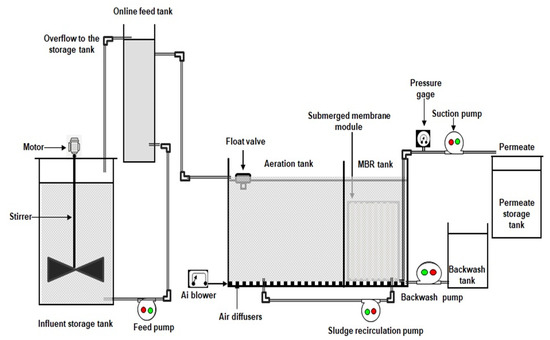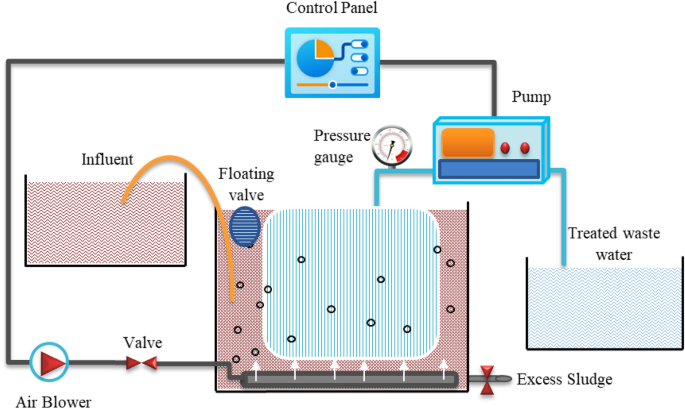Exploring the Environmental Impact of Membrane Bioreactor in Wastewater Treatment
Exploring the Environmental Impact of Membrane Bioreactor in Wastewater Treatment
Blog Article
Membrane Layer Bioreactors Described: Reliable Solutions for Tidy Water
Membrane bioreactors (MBRs) have actually emerged as an innovative solution for dealing with the pushing difficulties of wastewater treatment. By incorporating organic processes with advanced membrane layer filtering, MBRs not only improve the top quality of cured water yet additionally lower the spatial requirements of treatment centers. As ecological worries escalate, the function of MBR modern technology in advertising lasting water administration comes to be increasingly substantial. The intricacies of their procedure, advantages, and possible applications merit a closer assessment to totally understand their impact on the future of water therapy.

What Are Membrane Bioreactors?
Membrane bioreactors (MBRs) are sophisticated wastewater treatment systems that combine organic destruction procedures with membrane layer filtration technology. This combination permits for the effective removal of impurities from water, making MBRs a preferred choice in different applications, including community wastewater treatment and industrial effluent management.

Among the important benefits of MBRs is their ability to generate high-quality effluent, often appropriate for reuse in irrigation or industrial procedures. In addition, MBRs need a smaller footprint contrasted to traditional treatment systems, making them optimal for metropolitan settings where area may be restricted.
Additionally, MBRs can efficiently manage differing influent loads and are less susceptible to the effects of poisonous shocks. These features contribute to their expanding appeal as a sustainable remedy for resolving the raising need for tidy water while minimizing ecological influences.
Exactly How Membrane Layer Bioreactors Job
While the procedure of membrane layer bioreactors (MBRs) may appear facility, it essentially focuses on the harmony between biological procedures and membrane purification. MBRs incorporate an organic treatment procedure, usually triggered sludge, with a membrane separation device to deal with wastewater successfully.
In an MBR system, wastewater is very first introduced right into a bioreactor where microbes degrade raw material and various other impurities. The organic task reduces the concentration of pollutants while promoting the development of biomass. Following this biological therapy, the combined liquor goes through membrane purification, which can be microfiltration or ultrafiltration, depending on the preferred effluent quality.
The membranes act as a physical obstacle, allowing water and little solutes to pass while maintaining suspended solids and bigger molecules. This enables the system to keep a high concentration of biomass within the reactor, improving the treatment effectiveness.
In addition, the constant splitting up of treated water from the biomass facilitates a compact design and minimizes the impact of the therapy facility. On the whole, the combination of organic degradation and membrane filtering in MBRs leads to trusted and reliable wastewater therapy, ensuring premium effluent suitable for various applications.
Advantages of MBR Technology
Among the essential advantages of membrane bioreactor (MBR) modern technology is its capacity to create high-quality effluent with a significantly reduced impact compared to conventional wastewater therapy approaches. MBR systems properly integrate biological therapy and membrane filtering, resulting in premium removal of impurities, including put on hold solids, microorganisms, and raw material. This capacity results in effluent that frequently fulfills or exceeds rigorous regulatory criteria check out this site for reuse and discharge.
Additionally, MBR modern technology permits greater biomass concentrations, which improves the therapy efficiency and minimizes the required reactor quantity. This compact style is specifically advantageous in city locations where space is restricted. The functional flexibility of MBR systems likewise suggests they can adapt to varying influent high official source qualities and circulation prices, making them appropriate for a vast array of applications.
In addition, the decreased sludge manufacturing related to MBR processes adds to decrease functional and maintenance costs. The membranes act as a physical obstacle, minimizing the risk of blocking and allowing longer functional durations in between cleansing. Overall, the advantages of MBR innovation make it an eye-catching remedy for sustainable wastewater treatment, dealing with both environmental worries and the demand for reliable source management.
Applications of Membrane Bioreactors
With their versatility and efficiency, membrane bioreactors (MBRs) find applications across various sectors, including community wastewater treatment, industrial procedures, and even water reclamation. In municipal setups, MBRs give a portable remedy for dealing with wastewater, successfully getting rid of pollutants while all at once creating top notch effluent that satisfies rigid regulative standards. This makes them particularly ideal for locations with restricted space.
In commercial applications, MBR modern technology is used for treating procedure water, especially in markets such as food and beverage, drugs, and petrochemicals. These industries benefit from MBRs' capacity to take care of high organic loads and their efficiency in recovering valuable sources from wastewater, such as nutrients and water.
Furthermore, MBRs play an important role in water recovery efforts, enabling the reuse of dealt with wastewater for irrigation, industrial processes, or perhaps as drinkable water after further therapy (Membrane Bioreactor). Their efficiency in getting rid of microorganisms and pollutants makes them a trusted choice for guaranteeing water quality in different reuse applications
Future of Water Treatment Solutions
The future of water therapy solutions is poised for transformative advancements driven by technological innovation and boosting ecological understanding. As international water scarcity ends up being a pushing problem, brand-new methodologies, including membrane layer bioreactor (MBR) systems, are readied to play an essential duty in enhancing the performance and sustainability of water therapy processes.
Arising modern technologies such as expert system and equipment knowing are anticipated to maximize treatment operations, enabling real-time monitoring and predictive maintenance. This will certainly boost the overall dependability and efficiency of helpful site water therapy facilities. Moreover, advancements in membrane materials, such as graphene and nanofiltration, guarantee to boost permeation prices and reduce fouling, leading to lower energy usage and functional expenses.
Furthermore, the combination of renewable energy resources right into water treatment plants will add to greener techniques. The round economic climate model will certainly additionally acquire traction, encouraging the recovery of beneficial sources from wastewater, such as nutrients and energy.
Verdict

Membrane layer bioreactors (MBRs) have emerged as an innovative service for addressing the pressing challenges of wastewater therapy. By incorporating biological procedures with sophisticated membrane layer filtration, MBRs not just enhance the top quality of treated water however also minimize the spatial requirements of therapy facilities.One of the crucial advantages of membrane bioreactor (MBR) modern technology is its ability to generate top quality effluent with a dramatically minimized footprint contrasted to traditional wastewater therapy methods.With their adaptability and performance, membrane bioreactors (MBRs) discover applications throughout various industries, consisting of municipal wastewater treatment, industrial procedures, and also water reclamation.In conclusion, membrane bioreactors stand for a substantial development in wastewater treatment modern technology, integrating biological processes with effective membrane layer purification to produce premium effluent.
Report this page